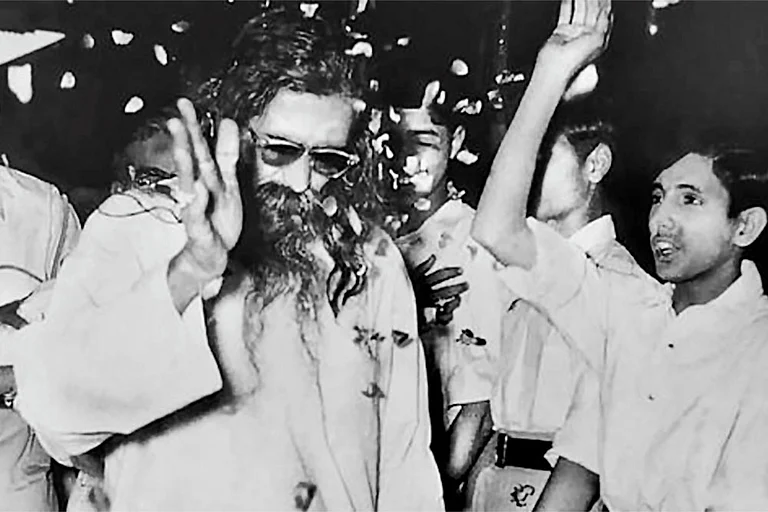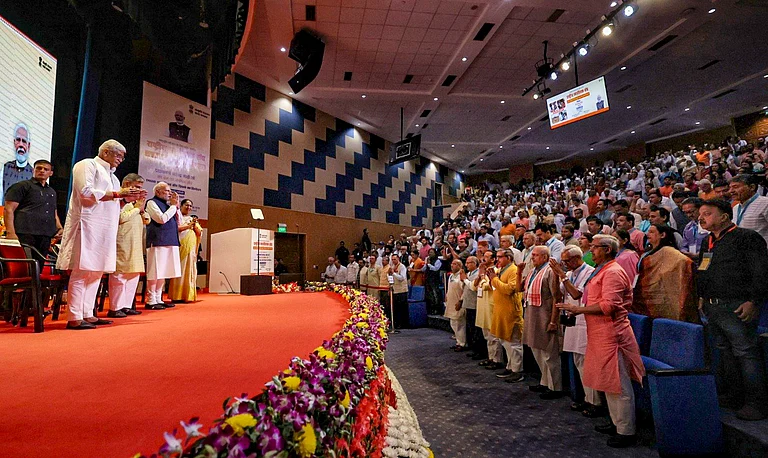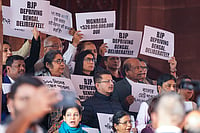
The RSS merges traditional Brahminism with modern Hindu ideals to define the “ideal Hindu.”
Untouchability is central to both Brahminism and the broader Hindu social structure.
Hindu identity is as much a social construct tied to caste as a religious or spiritual choice.
Gandhi repeatedly declared that he was a Hindu; BR Ambedkar proclaimed that though he was born a Hindu, he would not die one; MS Golwalkar argued that the term "Hindu" cannot be strictly defined; VD Savarkar claimed that anyone associated with Hindu civilization and culture is a Hindu.
Kancha Ilaiah explains Why I Am Not a Hindu; Shashi Tharoor describes Why I Am a Hindu; Bhanwar Meghwanshi declares I Could Not Be a Hindu; Vandana Sonalkar argues Why I Am Not a Hindu Woman; and the Supreme Court defines Hinduism as a way of life.
Periyar and Ambedkar asserted that caste cannot be annihilated without destroying Hinduism. Some say Brahminism is Hinduism. Others claim that Hinduism is the most tolerant of all religions, and Hindus are the most tolerant people in the world.
So, what is it to be a Hindu?
Hindu is not a purely religious or theological concept, but rather a social concept. The ultimate vision of RSS, according to Gowalkar, “is a perfectly organised state of society wherein each individual has been moulded into a model of an ideal Hindu manhood”. The problem in this goal is that the ideal Hindu is someone who renounces the world.
The word “Hindu” does not refer to the collection of various religious groups that developed during the medieval period. The RSS models itself on traditional maths but adopts the rituals of the modern nation-state. The RSS positions itself as the math (monastery) for Hindus, with its chief (Sarsanghchalak) acting as a renouncer who represents the ideal Hindu. In this way, the RSS becomes a melting pot where traditional Brahmanism and modern Hinduism merge, making the ideal Brahmin male the ideal Hindu male.
In popular understanding, Brahminism refers to the worldview of people who identify as Brahmins, while Hinduism is seen as a religious entity encompassing various sects and castes. In rhetorical terms, Hinduism is often described as a national religion that transcends linguistic, sectarian, and caste distinctions. Liberals also echo this idea, claiming that just as all rivers flow into the ocean, all sects and castes together form Hinduism. From their secular perspective, Hinduism is portrayed as intrinsically diverse and tolerant of the ‘other’—that is, being Hindu is equated with being tolerant.
The discourse of secularism centers on Hindutva, while the discourse of caste focuses on Brahminism. As a result, religious fundamentalism is linked to Hindutva and caste issues to Brahminism. Treating them as separate and independent obscures two key elements that connect them: the idea of caste-Hindus and the modern nation-state.
Brahminism is not limited to Brahmins. From at least the medieval period, the ideology of Brahminism has been structured around the idea of the Brahmin and the practice of untouchability. (The classification of certain people as Untouchables is a later development associated with the concept of being Hindu.)
Firstly, wherever the idea of the Brahminism operates, some form of untouchability is practised. Conversely, wherever untouchability exists, some form of the idea of the Brahmin is present.
Secondly, if the various religious groups that emerged during the medieval period are, in one way or another, related to the idea of the Brahmin, then the practice of untouchability defines the relationships between different castes, including those within the Brahmin community.
Thirdly, if distinct castes define themselves through untouchability, then the social expression of untouchability among these castes is essentially quantitative rather than qualitative.
Furthermore, if untouchability (touch or subject-centred) is an integral part of Brahminism, then the Untouchables (contact or object-centred) constitute the defining part of Hinduism.
To understand this, consider the issues involved in defining the intermediate caste groups. We are unable to establish the conceptual existence of these groups. Although they exist empirically, they lack a clear conceptual definition. The term “Sudra” is not a self-definition of these caste groups. If the term “non-Brahmin” is used, it must conceptually include the Dalit castes, and if the term “non-Dalit” is used, it must include the Brahmin castes.
The entire caste structure operates on the binary of the idea of the Brahmin and untouchability. While Brahminism in the medieval period shaped the practice of untouchability, the idea of being Hindu is intrinsically tied to the designation of certain people as ‘Untouchables’. The RSS is an organisation that seeks to combine Brahminism (the ideal Brahmin/untouchability) and Hinduism (the ideal Hindu/Untouchables), functioning as a Hindu math, akin to the traditional maths of various religious groups. Both Gandhi’s (understanding untouchability as a disability of the Hindu self) and Ambedkar’s (“I will not die as a Hindu”) positions can be understood from this perspective.
This form of Hinduism sustains itself through untouchability and the existence of Untouchables. The mission of the RSS is to establish the Hindu social order, with its chief embodying the ideal Hindu. Gandhi and Ambedkar were among the first to highlight the inherent contradiction between Hinduism and untouchability. Yet liberals and radical thinkers also overlook this critical relationship between Hinduism and untouchability. When writers like Shashi Tharoor elaborate on Why I am a Hindu, they fail to engage with the question of untouchability and the Untouchables.
Being a Hindu is not an innocent act based merely on religious faith. The Hindu social order is intrinsically connected to the ideas of the ideal Brahmin and the ideal Hindu, as well as to untouchability and the Untouchables. The mission of the RSS is to develop and sustain this Hindu social order. We are paying a heavy price for having accepted the idea of the ideal Brahmin — a world-renouncer, a self-contained being. Are we now to accept the idea of an ideal Hindu modelled on the ideal Brahmin?
(This article is based on the author’s Tamil book ‘Hindu Matham – Oru Visaranai: RSS – Parpanar – Saathikal’.)
(views expressed are personal)
Srinivasa Ramanujam, writes and translates in Tamil. He has translated the works of Profs. Sundar Sarukkai, Gopal Guru, Patrick Olivelle and Urdu Writer Saadat Hasan Manto in Tamil. He has published the book ‘Renunciation and Untouchability’ both in English and Tamil, and published a book on ‘Hinduism – An critical Enquiry: RSS, Brahmin and Caste’ in Tamil. He has also published a collection of his essays as ‘Srinivasa Ramanujam Essays: A Phenomenological study’.
























